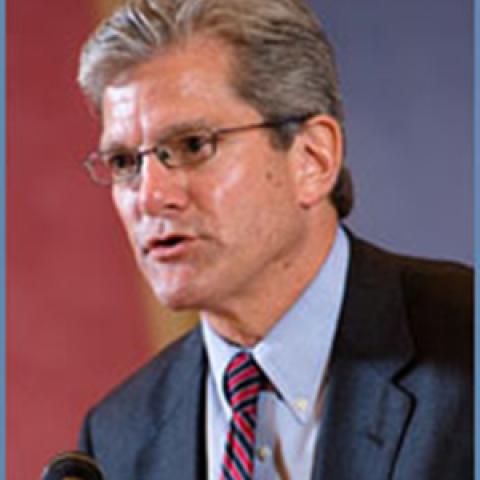SUMMARY: __While serving at the Bradley Foundation in Milwaukee, William Schambra drew up a plan for a year-long internship designed to acquaint fledgling program officers with philanthropy. This piece is an outline of that internship program, a key component of which is the experience of the triumphs and tribulations of a small, struggling nonprofit. The full text of the article, which appeared in the September/October 2003 issue of Philanthropy magazine, can be found below.__
For those who thought philanthropy was a fairly simple matter--find a worthy cause and write a check--please be advised that this fall the Center on Philanthropy at Indiana University will offer what is believed to be the "first traditional format Ph.D." in Philanthropic Studies. Even those without an inclination for such highly professionalized training might ponder this question: What training would be useful to "learn" philanthropy?
While serving as vice president at the Bradley Foundation in Milwaukee, I sketched out a plan for a year-long internship designed to acquaint fledgling program officers with philanthropy as we practiced it. The program would be aimed at a particular sort of student: a young person who appreciates (1) the free market system that produces the wealth to be given away by foundations, and (2) the American federal republic that disperses political power and leaves local communities and private associations amazingly free to govern their own affairs, often with the assistance of foundations. But one thing more would be required of a proper intern: a sense that the foregoing is not enough, that we are called to go beyond an intellectual appreciation of markets and limited government and become personally engaged in rebuilding the moral and civic infrastructure that protects and uplifts the most vulnerable among us. Those of us who call ourselves conservatives have yet to address adequately the youthful yearning toward compassionate service; this internship would be one attempt to do so.
Throughout the year, the interns and I would work our way through a series of readings. Alexis de Tocqueville's Democracy in America would remind us that American freedom is safe only so long as we have a flourishing realm of voluntary associations--religious, ethnic, philanthropic, political--through which people build their own communities and learn and practice the art of self-governance. Funders must recognize that virtually every grant they make sends reverberations through the existing web of civic associations, either distorting it to suit the donor's purposes, or quietly sustaining it in its civic work.
Reading Robert Nisbet's Quest for Community we would see the threat to the civil society Tocqueville describes that is posed by the all-encompassing political state. That imposing state seductively holds out the possibility of a new and improved community at the national level, while it simultaneously relieves communities and citizens of the burdens of self-government--and the luxury of freedom. James C. Scott's Seeing Like a State would show us how easy it is to drift toward the total state just by starting with a desire to impose an orderly intellectual framework on reality. John Jordan's Machine-Age Ideology would introduce students to modern philanthropy's infatuation with just such a project, rooted in twentieth-century social science. These books warn funders of the perils of grantmaking that promotes the transfer of ever more aspects of civic life from local groups into the hands of higher authorities--a danger that makes its first appearance in donors' frustration with the results of small-scale grantmaking amidst the seeming disorder of civic life, followed by an effort to impose a rational, "scientific" order on civil society through "collaborative planning" and "partnerships" with large foundations and government.
Peter Berger and Richard John Neuhaus's To Empower People and Richard Cornuelle's Reclaiming the American Dream are must-read modern classics, describing ways to deploy Tocquevillian civic associations to meet social needs within the context of the contemporary state, without losing the essential spirit of self-governance. John McKnight's The Careless Society: Community and Its Counterfeits would add the point that engorged government is but part of the larger challenge posed by the professionalization of social services, which can let credentialed elites displace self-governing citizens even within the "voluntary" sector itself. Finally, Robert Woodson's The Triumphs of Joseph would introduce the student to a remarkable group of neighborhood leaders who perfectly capture the Tocquevillian impulse toward self-governance and personal responsibility. As Woodson notes, these unsung neighborhood heroes must struggle against not only the pathologies of poverty, but also against the encroachment of disempowering, professionalized, bureaucratic social-service providers, located not only in government bureaucracies but all too often in large nonprofits and funded by foundations.
The centerpiece of the internship would be an assignment for several months to one or two of the Josephs" described by Woodson. The interns must come to appreciate--from the point of view of a small, struggling nonprofit--exactly what life is like in a low-income community, facing the infinite range of daily challenges that stubbornly refuse to fit themselves into neat social program categories. These future funders must realize how profoundly detached and removed most foundation priorities and projects are from such challenges. After experience in the field, the intern would shadow a foundation program officer and learn about the daily challenges she faces. The critical educational piece here is the "ride-back drill": the trip back to the office following a site visit, in which the intern must answer the central question, "What did you see?" , May/June, for possible guidelines for the visit.)
Clearly, such an internship is not meant to replace professional training in nonprofit and foundation management. But now the student will understand that large, heavily staffed foundations and nonprofits represent only a small if highly visible part of civil society. Within the "dark matter" of civil society are to be found the countless small, scruffy grassroots groups that may be invisible to society's elites, but are centrally important in the lives of citizens in low-income communities--and now, visible to at least one potential program officer.
Upon completion of the internship, I would give my students a copy of Amy Kass's new collection of readings, The Perfect Gift.* It's a rich collection of short stories, excerpts from the great religious documents, and philanthropists' introspections, all addressing the largest questions we face: Why do we give? What should we give? To whom should we give? Especially if my interns are going on to professional training in a nonprofit management program, they will need to return frequently to these fundamental questions about the ultimate ends of their vocation. It is no accident that one of the first readings in the volume is a selection from Democracy in America describing the science of association, reminding us that the cultivation of a proud, vigorous, self-governing civil society must always be one of the first purposes of American foundations. While you don't need a Ph.D. to understand and act on this truth--indeed, most of what passes for nonprofit training tends to ignore or suppress it--I take it as a hopeful sign for philanthropy that Amy Kass's book is published by the same university that has just launched the field's first doctorate.
















